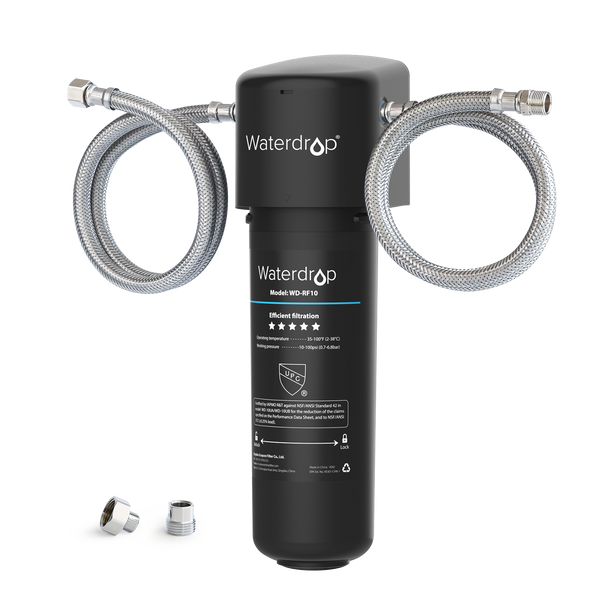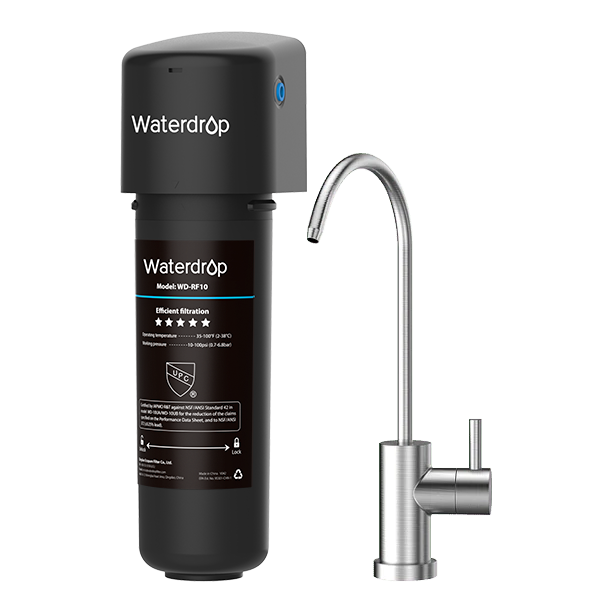Global Warming Forces the Early Collapse of Last Full Ice Shelf
by Dr. Jonathan Doyle - Updated August 24, 2020
The last fully intact ice shelf, the Miline Ice Shelf, has collapsed. This is just one of the victims of global climate change. But does it stop there? Waterdrop will tell you more.
Table of Contents
Global warming, coupled with the unusually hot summer this year, has led to the untimely collapse of Canada's only surviving ice shelf right into the ocean.

Watch this video to learn more about this astonishing news.
The Milne Ice Shelf, lying on the north-western edge of Ellesmere Island, is the last intact, full ice shelf in Canada, existing for over 4,000 years before its collapse.
According to satellite images, the collapse of this ancient ice shelf led to the formation of two giant icebergs – one almost the size of Manhattan – and other smaller ones.
The Manhattan-sized giant iceberg has an area of 21 square miles, a length of 7 miles, and 230-260 feet thickness.
Announcing the collapse via its Twitter handle earlier this month, the Canadian Ice Service attributed the collapse to sharp and harsh changes in environmental conditions. “Above normal air temperatures, offshore winds and open water in front of the ice shelf are all part of the recipe for ice shelf break up,” the government established tweeted.

Researchers also share the same conviction – identifying climate change as the driving force of the collapse. This year's summer in the Canadian Arctic comes with an unusually high temperature – five degrees (Celsius) higher than the 30-year average.
“Without a doubt, it's climate change,” Luke Copland, a Glaciology Professor at the University of Ottawa and a member of a research team on Milne Ice Shelf, opined. “The Milne was a special one at a pretty location.”
The temperature rise in the Arctic is faster.
The continuous Arctic amplification in the Arctic means the area is warming up much faster than other parts of the world. The unusually hot temperatures force the melting of ice – six times faster than what was obtainable in the 1990s.
Although Milne is not always considered to be at the risk of collapse, considering the protection it enjoys from the Milne Fiord, it has sustained multiple cracks over time. The collapse of the Milne Ice Shelf means that the Arctic now has fewer ice shelves than ever.
Ice shelves are becoming increasingly scarce.
While there may be a few in protected fjords, Copland believes that “pretty much all of them from the northern Greenland and the Russian Arctic are gone.”
There were six ice shelves in the area fifteen years ago, but the number has surprisingly gone down to zero with Milne's collapse – the last complete ice shelf.
Just earlier this summer, the last two St. Patrick ice caps in Ellesmere collapsed. And Mark Serreze, director of the National Snow and Ice Data Center (NSIDC) in Boulder, Colorado, said they knew “it was only a matter of time” before Milne followed suit.
Serreze also added that the Murray and Simmons ice caps on Ellesmere are also on the brink of shrinking, at least in the next ten years.
Is there anything we as human can do to make things better?
Yes. On the back of these global environmental changes, more people are adopting water purifiers such as reverse osmosis systems as solutions to their water needs. This is because using water purification systems largely reduces the use of bottled water, and thereby reducing plastic pollution and also carbon emmissions by causing less transportation of bottled water.
Here Waterdrop will provide a perfect solution to you, as we take pride in our smart, tankless RO systems--G3, G2, G2 P600, and so much more. With its fast flow rate of 400~600 GPD, Waterdrop reverse osmosis water system easily meets the daily water intake of a whole family or a small-sized company. Waterdrop RO effectively removes 99.99% of contaminants such as TDS, lead, chlorine, benzene, salt, etc. The smart control panel makes sure you get the real-time TDS level and the accurate remaining filter life, and the system will remind you when to change the filters so that you do not have to monitor yourself.
Contaminants Detected in Fruitland Water
Special
Service District
30
Contaminants
EXCEED EWG HEALTH GUIDELINES
EXCEED EWG HEALTH GUIDELINES
30 Total Contaminants in Your Water
Water Provider
Fruitland Water Special Service DistrictPopulation Affected
120,000Water Source
Ground waterExceeds Guidelines
Others Detected















